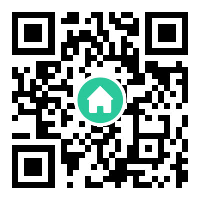The Rise of Telegram Link Sharing in Digital Communication
Telegram link sharing has become a cornerstone of modern digital communication, enabling users to seamlessly connect, collaborate, and distribute content across the globe. As a secure messaging platform, Telegram offers unique features like public channels, private groups, and direct message forwarding—all of which rely heavily on link sharing to expand reach and foster engagement. Whether for personal use, community building, or business promotion, Telegram link sharing bridges gaps between individuals and ideas, making it a vital tool in today’s hyperconnected world.
Why Telegram Link Sharing Matters
Unlike traditional social media platforms, Telegram prioritizes privacy without sacrificing accessibility. Its link-sharing mechanism allows users to invite others to channels or groups via customized URLs, which can be shared across websites, emails, or other apps. For businesses, this means targeted audience growth; for activists, it ensures secure coordination; and for creators, it opens doors to monetization through subscriber-based content. The simplicity of Telegram link sharing also reduces friction in onboarding new members, making it a preferred choice for time-sensitive campaigns or viral content distribution.
Challenges and Risks in Telegram Link Sharing
Despite its advantages, Telegram link sharing is not without challenges. The platform’s encryption and anonymity features can attract misuse, such as spreading misinformation or illegal content. Public links, if poorly managed, may expose groups to spam bots or malicious actors. Additionally, some governments restrict Telegram access, complicating link-sharing efforts in regulated regions. Users must balance openness with caution—employing tools like invite approvals or temporary links—to mitigate risks while maintaining the platform’s collaborative spirit.
Best Practices for Effective Link Sharing
To maximize the benefits of Telegram link sharing, users should adopt strategic practices. First, customize URLs to reflect brand or purpose, enhancing recognition and trust. Second, monitor link analytics through third-party tools to track engagement and adjust outreach tactics. Third, combine public links with private invitations to maintain community quality. Finally, regularly update or revoke outdated links to prevent unauthorized access. By integrating these approaches, individuals and organizations can leverage Telegram’s capabilities while safeguarding their digital ecosystems.
The Future of Telegram Link Sharing
As Telegram continues to innovate, link-sharing features will likely evolve to meet emerging demands. Potential developments include AI-driven link moderation, geotargeted sharing options, or integration with decentralized web3 platforms. Furthermore, Telegram’s growing role in e-commerce and education could spur specialized link formats for payments, courses, or event registrations. By staying ahead of trends and user needs, Telegram link sharing will remain a dynamic force in shaping how we connect and communicate online.
Conclusion
Telegram link sharing is more than a technical function—it’s a catalyst for global interaction. From empowering grassroots movements to streamlining corporate workflows, its impact spans industries and borders. By understanding its potential, addressing its risks, and embracing best practices, users can harness this tool to build meaningful connections in an increasingly fragmented digital landscape. As technology advances, Telegram’s commitment to secure, flexible communication ensures that link sharing will stay relevant, adaptable, and indispensable.













